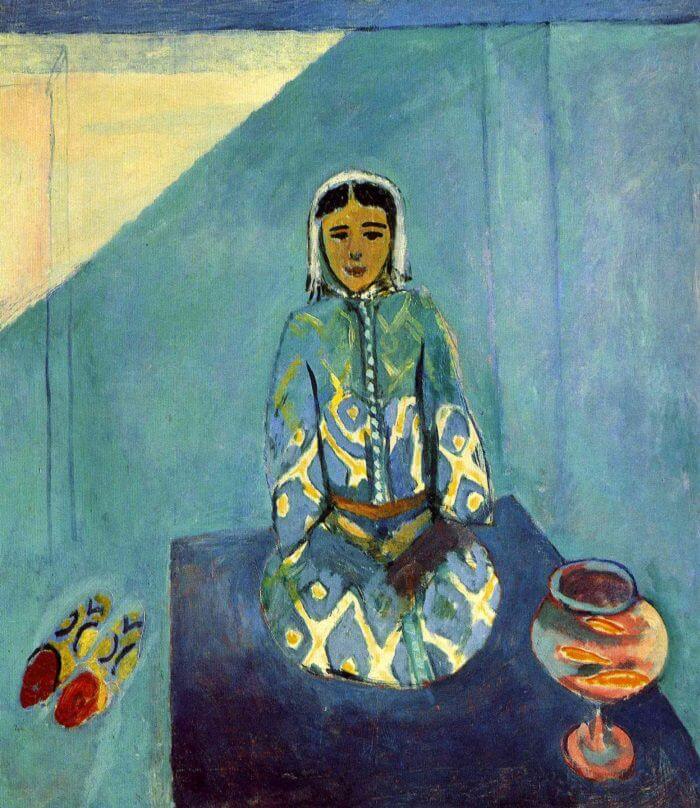Description
Zorah on the Terrace: A Study in Color and Culture by Henri Matisse
Henri Matisse's painting Zorah on the Terrace, painted in 1912 during his stay in Morocco, is a masterpiece that combines the beauty of Moroccan culture with the boldness and simplicity of Matisse's style. This painting, depicting a Moroccan woman sitting on a terrace, is a testament to Matisse's ability to capture the essence of his subject with a palette of vibrant colors and simplified forms.
The composition of Zorah on the Terrace is notable for its simplicity and balance. Matisse places Zorah, the central figure, at the center of the painting, creating a sense of stability. The terrace and the landscape behind her provide a frame for Zorah, directing the viewer's attention to her. Despite the simplicity of the composition, Matisse manages to create a sense of depth and space through the arrangement of the elements in the painting.
The use of color in Zorah on the Terrace is one of the painting's highlights. Matisse is known for his bold and expressive use of color, and this painting is no exception. The warm, earthy tones of the background contrast with the cooler, softer tones of Zorah's clothing, creating a visual contrast that draws the viewer's attention. Matisse also uses color to suggest light and shadow, giving the painting a sense of three-dimensionality.
The figure of Zorah is another interesting aspect of the painting. Although his face is in shadow and his features are barely visible, Matisse manages to convey a sense of his personality through his posture and clothing. Her clothing, a traditional Moroccan haik, is painted with soft, fluid strokes that suggest the texture and movement of the fabric. His posture, with his head slightly tilted and his hands resting calmly in his lap, suggests a sense of calm and serenity.
Despite its apparent simplicity, Zorah on the Terrace is a painting rich in detail and meaning. A lesser known aspect of the painting is the fact that Zorah was actually Matisse's servant during his stay in Morocco. Matisse was impressed by her beauty and dignity, and chose her as a model for several of his paintings.
Zorah on the Terrace is a brilliant example of Matisse's ability to combine form, color and content in a way that is both attractive and meaningful. Through his depiction of Zorah, Matisse not only captures the beauty of his sitter, but also the richness and diversity of Moroccan culture. This painting is a testament to Matisse's ability to see beyond the superficial and capture the essence of his subject.

